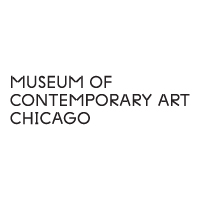Mit Jai Inn’s “Dreamworld”
By Tiffany Leung

Detailed installation view of MIT JAI INN’s dreammantra, 2021, oil on canvas, acrylic and glue on canvas, and metal, dimensions variable, at "Dreamworld," Ikon Gallery, Birmingham, 2021. All images courtesy the artist and Ikon Gallery.
It is surprising Mit Jai Inn, a leading figure in Thai contemporary art for the past 35 years, remains relatively little-known outside of Southeast Asia. Perhaps because his dedication to working anonymously on collective initiatives meant his work thrived outside of art world parameters, unnoticed by curators and art institutions in the West, or because he doesn’t necessarily consider what he creates as “contemporary art,” nor feels a need to pursue recognition as an “artist.” Whatever the reason, this major solo exhibition of recent and new works—Mit’s first in Europe—offered an overdue introduction to his playful, visceral, and magnanimous approach to art-making and life.
Amidst subdued lighting, Midlands Dwelling (2021), the first work encountered upon entering the show, blanketed the floor and three walls with outsized canvases that visitors could walk on and touch. Looking closely, thick layers of metallic silver enamel and splodges of multicolored pigments—pink, orange, blue, yellow, green, brown—at once conceal and refract each other. Tall, spear-like rods smeared with vibrant acrylics rested against the corner while an equally hued metal spiral sat on the floor next to them. Created with students at the Birmingham School of Art, these whimsical objects were bent, twisted, and welded from scavenged metal scraps into their new forms. Their playful tactility is reminiscent of the sculptures of Franz West, for whom Mit worked as a studio assistant while studying in Austria during the late 80s to early 90s.
It was also during this time when he began exploring art as a form of free distribution and its potential to convey a generosity that inspires reciprocity. This idea is exemplified by #dreammantra (2021), a participatory work that invited viewers to perform a pledge, where they take home Mit’s small wire sculptures and colorful canvases in exchange for polaroid photos to be left in their place. By the second week of the exhibition, all of Mit’s pieces were gone and the space was filled with images of the beaming new owners of his work. What remained on the wall was a set of instructions explaining the dharmas of gift-giving, a ritual that not only captures Mit’s Buddhist beliefs—having been trained as a novice monk until his mid-teenage years—but the concept of the artwork as a gift that undergirds his practice.
For Mit, painting has always been tactile, flexible, and full of new possibilities. Over the years, he has developed a technique of applying a viscous blend of paint, linseed oil, gypsum, and glitter onto unstretched canvas. As the mixture solidifies, the canvas becomes stiff enough to hold its shape, evident in ongoing series Scrolls (1987– ). The newest addition to the series is a set of shoulder-high canvases curled and propped upright on the floor of a light-filled room. Partially unravelled, the lurid scrolls boast layers of densely applied neon streaks and colorful specks that lure viewers to observe their sheer materiality, sensuous expression, and psychedelic effect. Similar qualities are embraced in recent pieces Loops (2019) and Patch Work 2 (2019), which consist of polychromatic canvas strips loosely hung on the ceiling beam, or woven into a wall-mounted grid. Part of Mit’s practice is improvising and reconfiguring his works in new environments. Ecstatic, mesmerizing but also elusive, his paintings are never explicit and their insights on the human psyche morph and transform over time. It is this open-endedness of his method that enables his audience to open up their minds and senses.
Inhabiting the last room was Dream Tunnel (2021), an imposing installation evocative of its title. Color-splattered canvases with ribbon-like fringes were suspended from the ceiling, forming an immersive tunnel for visitors to meander through. This enchanting finale amptly wraps up the exhibition with the indelible qualities of Mit’s oeuvre—full of life, movement, and a sense of freedom. Mit’s work takes on a divine presence, his consciousness emanates from each piece and imbues the surroundings with joyousness and generosity. Moving through the gallery felt like undergoing a series of mind-drifting meditations and rituals of spiritual healing, spurred by the artist’s material traces; it recalls our capacity for more meaningful ways of connecting with the world.
Mit Jai Inn’s “Dreamworld” was on view at Ikon Gallery, Birmingham, from September 15 to November 21, 2021.
%20x%20135(H)%20px-03Rc-72dpi%20(2).jpg)






